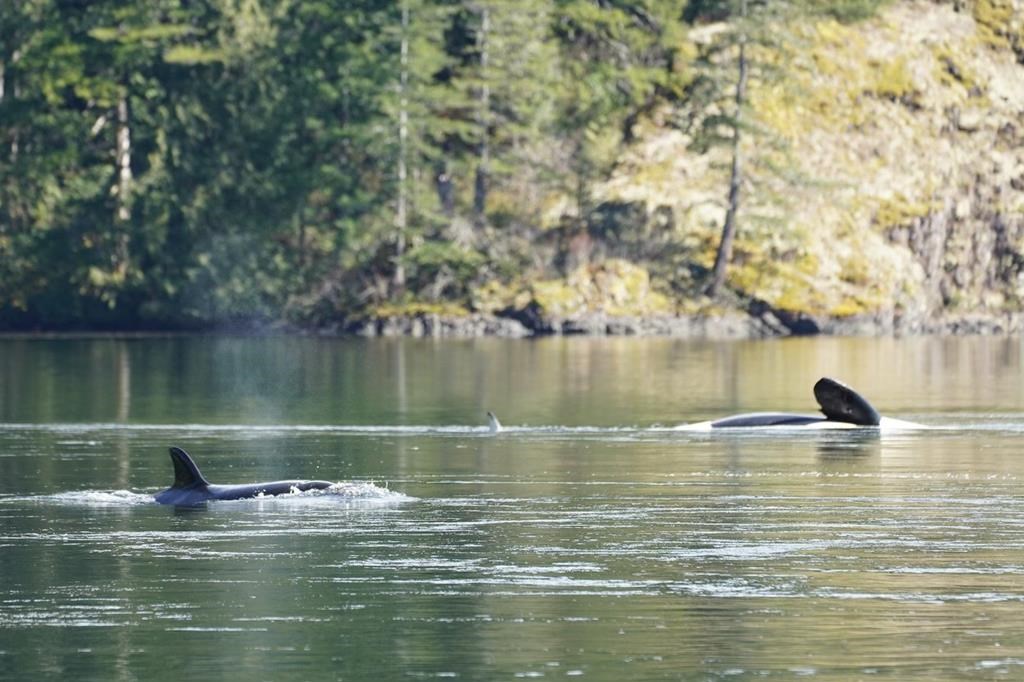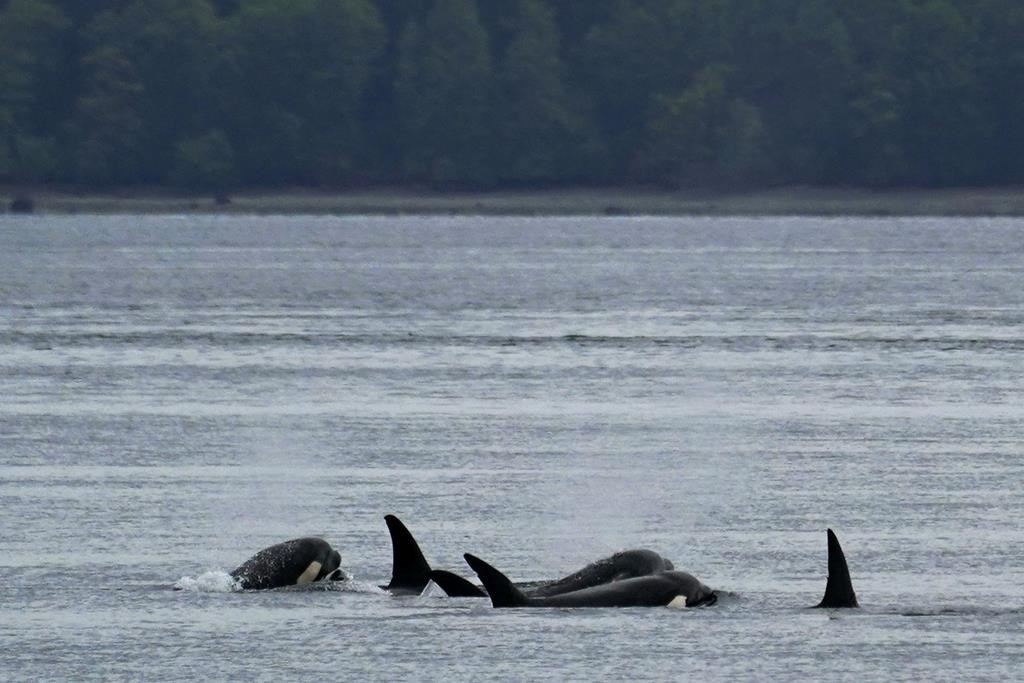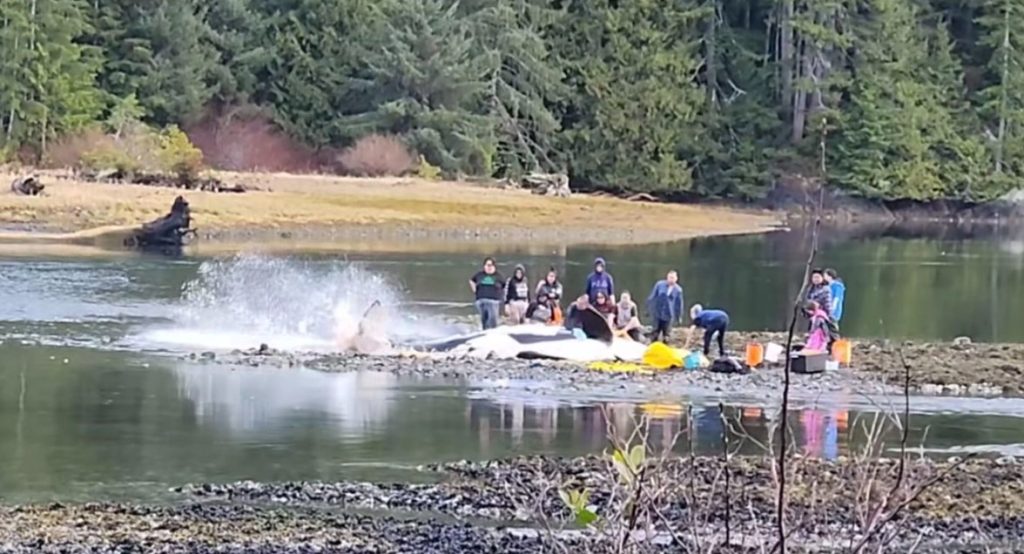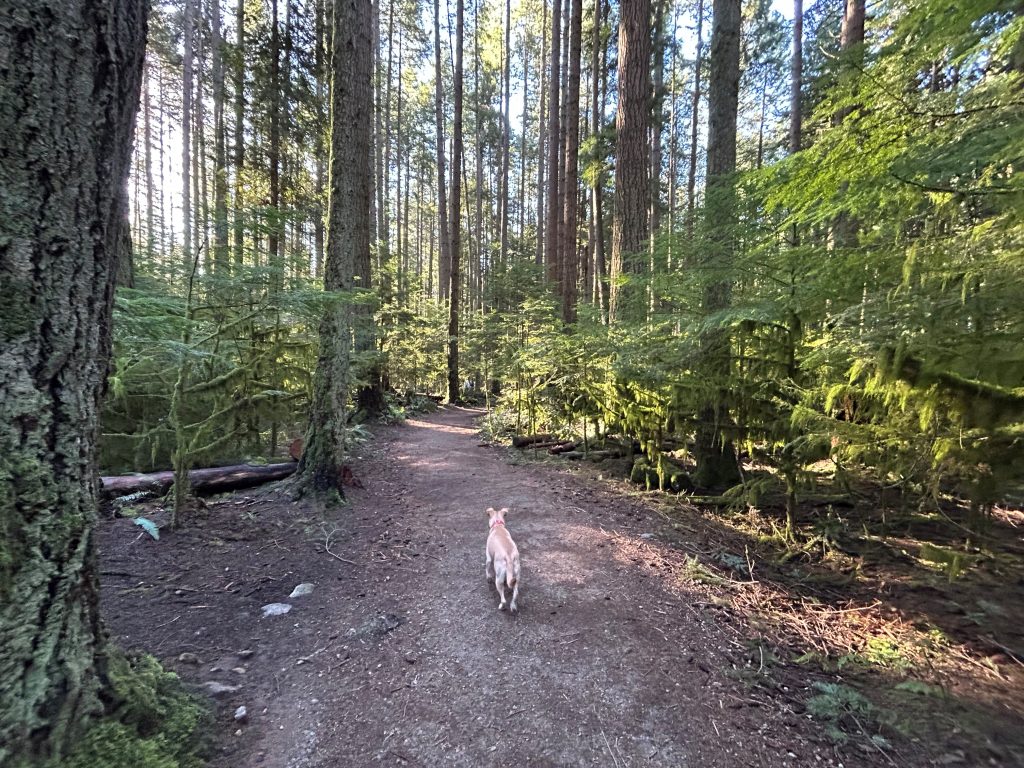Orca calf still stuck in B.C. lagoon as rescuers race to free kʷiisaḥiʔis

Posted March 27, 2024 2:55 pm.
Last Updated March 27, 2024 3:48 pm.
The ʔiiḥatisatḥ (Ehattesaht) First Nation and Department of Fisheries and Oceans continue to work to free a juvenile orca that’s stuck in a lagoon on Vancouver Island.
Officials say all options are on the table to free the calf, named kʷiisaḥiʔis (kwee-sahay-is), which roughly translates to Brave Little Hunter.
“It’s an important name because it’s so small, and the ‘is’ (denotes) that it’s a small baby, almost,” said Ehattesaht Chief Simon John Wednesday.
According to those in the area, it’s unclear if kʷiisaḥiʔis has been able to eat since before his pregnant mother died over the weekend.
“We were out there yesterday and we cannot determine if it’s eating because of the depth of the channel,” said John.
“And also with the drone footage that we have to monitor the calf — the calf’s active, the body condition looks okay, and the female mother was lactating. So, indications are that that calf was partially dependent, at least, on mom, and an animal that young, to catch its own prey, would be pretty difficult. But having said that, this is new territory,” added DFO Pacific Region Marine Mammal Coordinator Paul Cottrell.
John says teams have been taking a little break, after trying “pretty hard” on Tuesday to get the calf out and back with its pod.

“It almost worked but it didn’t actually meet what we were trying to do to get it out of there. It’s a very narrow passage, it’s almost like threading the needle, as one person put it, that this whale has to go through,” he explained.
“I’m really considering, that working together, we can achieve getting it out of there.”
Cottrell says all options are on the table to get kʷiisaḥiʔis free and back into the open ocean, including the use of various acoustic mechanisms, like okoimi pipes, and tools, like Hukilau (long ropes with floats and lines).
“I just want to add the collaboration to date with the efforts — this is a very complex situation, lots of variables, very small window of current, that slack that we can get through — and just the collaboration with the Ehattesaht and Nuu-chah-nulth First Nation to put together, in a very short amount of time, the response is amazing,” he said.
“I’ve been involved with lots of different marine mammal rescues and this is definitely one of the most complicated by far. And I think, where we are, we’ve learned a lot and we’ve made some progress, but we just haven’t been able, to date, to get that animal through the current area, which is a big challenge.”
Tide changes put pressure on rescue efforts
Cottrell says everyone is “very hopeful,” adding new techniques and contingencies will be put to the test in the coming days, with tide changes looming.
He explains discussions are ongoing, given the short-time frame.
“As you can imagine, this is a very short window we have, so we’re having to look at all those options and think ahead in case we have to look to those later options … So we are thinking beyond if we have to change tactics and, depending on the calf’s health going forward,” he said.
Chief John notes the calf and its mother got caught in the inlet near Zabellos — in Little Espinosa — Friday night, during high tide.
He says a community member came knocking for support, to try and get the mother “upright and out of danger.”
“We started organizing, basically immediately, to get people out there,” he recalled.

“By the time it all happened, I think the tide was at its lowest point and I think it had already been over six hours,” John continued. “The whale … tried to move and get back into the water as the tide came in, but when the tide came in, the whale actually started to suffocate.”
John says even through the night, the mother whale had aspirated the contents in its stomach, contributing to her condition. Cottrell notes the whale’s pregnancy also likely played a role in her inability to stay upright.
“The baby was actually working pretty hard in the current of the bridge, below the bridge, around the bridge, that whole area there, and by the time the tide came in, the baby had actually moved over the bar and onto the other side of the bar, where it is now,” John said.








